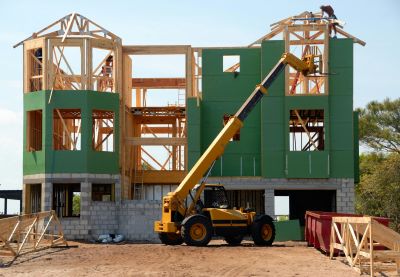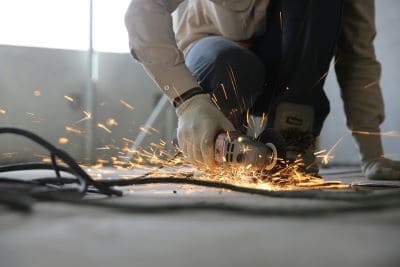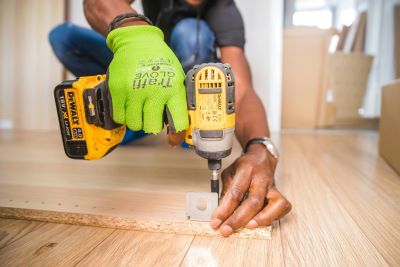28 Mar What Is The Best Material To Build With?
What Is The Best Material To Build With?
When embarking on a construction project, one of the most critical decisions you’ll make is selecting the right material to build with. Your choice will not only affect the aesthetics of the structure but also its durability, cost-effectiveness, and environmental impact. With numerous options available, ranging from traditional choices like wood and concrete to newer alternatives like steel and composites, it’s essential to understand the pros and cons of each. In this guide, we’ll explore various materials and factors to consider when deciding what is the best material to build with.
Wood: A Timeless Classic
Wood has been a staple in construction for centuries, prized for its natural beauty, versatility, and renewable nature. From sturdy oak beams to elegant cedar siding, wood offers a wide range of options to suit different architectural styles and preferences. Its thermal insulation properties make it ideal for maintaining comfortable indoor temperatures, while advancements in treatment methods have enhanced its resistance to pests and decay. However, wood requires regular maintenance to prevent rotting, warping, or insect damage, and may not be as durable as some alternative materials.

Concrete: Strength and Stability
Concrete is renowned for its unparalleled strength, making it a popular choice for structural components like foundations, columns, and slabs. Its ability to withstand heavy loads, extreme weather conditions, and fire makes it a preferred material for buildings requiring superior durability and stability. Additionally, concrete offers excellent thermal mass, helping regulate indoor temperatures and reduce energy consumption. While initial construction costs may be higher than wood or steel, the long-term durability and low maintenance requirements make it a cost-effective investment.
Steel: Modern Innovation
Steel has revolutionized the construction industry with its exceptional strength-to-weight ratio, versatility, and sustainability. From skyscrapers to bridges, steel structures dominate the urban landscape, offering unparalleled design flexibility and structural integrity. Unlike wood, steel is impervious to rot, pests, and fire, making it a durable and low-maintenance option for long-lasting buildings. Additionally, steel is highly recyclable, reducing waste and environmental impact during both construction and demolition phases.
Brick: Enduring Elegance
Brick has stood the test of time as a symbol of durability, craftsmanship, and timeless elegance. Its natural composition, consisting of clay or shale fired in a kiln, creates unique textures and colors that add character to any building facade. Beyond its aesthetic appeal, brick offers excellent thermal mass, helping regulate indoor temperatures and reduce energy costs. While brick construction can be labor-intensive and time-consuming, the result is a structure that exudes charm and sophistication.
Composite Materials: The Best of Both Worlds
Composite materials, such as fiberglass, vinyl, and engineered wood products, offer a blend of traditional and modern features, combining the benefits of natural and synthetic materials. These innovative materials are engineered to provide enhanced durability, stability, and weather resistance while mimicking the look and feel of natural wood, stone, or metal. Composite decking, for example, offers the warmth and texture of wood without the maintenance requirements, making it an attractive option for outdoor spaces.

Factors to Consider
When choosing the best material for your building project, several factors should influence your decision:
1. Durability: Consider the expected lifespan of the structure and the maintenance requirements of each material.
2. Cost: Evaluate the initial construction costs, long-term maintenance expenses, and overall value for money.
3. Environmental Impact: Assess the sustainability, recyclability, and carbon footprint of each material to minimize environmental harm.
4. Aesthetics: Determine the desired look and feel of the building, considering factors such as texture, color, and architectural style.
5. Structural Requirements: Consult with structural engineers to ensure the chosen material meets safety and regulatory standards for the intended application.
FAQs (Frequently Asked Questions)
Q: Is wood a sustainable building material?
A: Yes, when sourced from responsibly managed forests, wood is a renewable resource that can be harvested and replanted to maintain ecological balance.

Q: What are the advantages of using steel in construction?
A: Steel offers exceptional strength, durability, and design flexibility, making it suitable for a wide range of applications, from residential homes to industrial complexes.
Q: Are brick buildings energy-efficient?
A: Yes, brick’s thermal mass properties help regulate indoor temperatures, reducing the need for heating and cooling and lowering energy costs over time.
Q: What are the drawbacks of composite materials?
A: While composite materials offer many benefits, they can be more expensive upfront and may lack the authentic look and feel of natural materials.
In Conclusion
Choosing the best material to build with requires careful consideration of various factors, including durability, cost, environmental impact, aesthetics, and structural requirements. Whether you opt for the timeless elegance of brick, the modern innovation of steel, or the versatility of composite materials, each option offers unique benefits and challenges. By weighing the pros and cons and consulting with experts, you can make an informed decision that ensures your building project stands the test of time while minimizing its ecological footprint.

